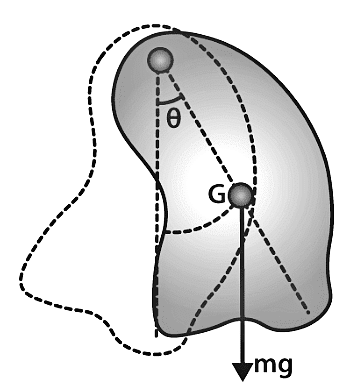A simple pendulum can be described as a device where its point mass is attached to a light inextensible string and suspended from a fixed support. The vertical line passing through the fixed support is the mean position of a simple pendulum. The vertical distance between the point of suspension and the centre of mass of the suspended body, when it is in the mean position, is called the length of the simple pendulum, denoted by L. This form of the pendulum is based on the resonant system having a single resonant frequency.
Simple Pendulum Definition
- A simple pendulum is a mechanical arrangement that demonstrates periodic motion. The simple pendulum comprises a small bob of mass ‘m’ suspended by a thin string secured to a platform at its upper end of length L.
- The simple pendulum is a mechanical system that sways or moves in an oscillatory motion. This motion occurs in a vertical plane and is mainly driven by gravitational force. Interestingly, the bob that is suspended at the end of a thread is very light; somewhat, we can say it is even massless. The period of a simple pendulum can be made extended by increasing the length string while taking the measurements from the point of suspension to the middle of the bob. However, it should be noted that if the mass of the bob is changed, the period will remain unchanged. The period is influenced mainly by the position of the pendulum in relation to Earth, as the strength of the gravitational field is not uniform everywhere.
- In addition, pendulums are a common system whose usage is seen in various instances. Some are used in clocks to keep track of the time, while some are just used for fun in case of a child’s swing. In some cases, it is used in an unconventional manner, such as a sinker on a fishing line. In any case, we will explore and learn more about the simple pendulum on this page. We will discover the conditions under which it performs simple harmonic motion as well as derive an interesting expression for its period.
























